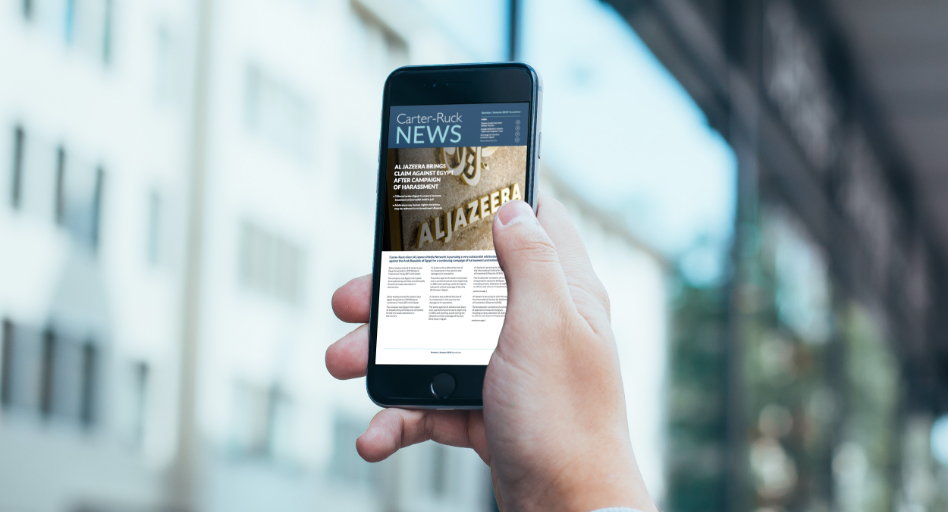
To understand how the phenomenon of celebrity has developed and interacts with politics, and how so-called Fake News has become such an important part of this, we need first to understand a new and related phenomenon.
Social media and mainstream media have begun to feedback into one another, and now the two spheres are beginning to create a new hybrid ecosystem of interacting media that is unfamiliar to many established politicians and institutions.
This is being exploited by new political actors — especially but not exclusively those who can leverage pre-existing public recognition and notoriety and deploy it across novel platforms — to bypass the traditional channels of communication and reach directly to new mass audiences of dissatisfied people, changing the culture and potentially the fate of nations.
Hybrid media drives a vicious cycle
The hybridisation of social and mainstream media is increasingly common. People engage with ideas they encounter first on social media — often Twitter but increasingly Instagram, Facebook and even Snapchat — and then the fact of that engagement alone propels it into what’s now often called the mainstream media.
We see articles in newspapers, on TV and on the websites of major news organisations that are reporting on stories that are trending on social media, and on the reactions that stories receive on social media. You get a story about a tweet that went viral; you get stories about how people react to tweets, reporting the replies to a tweet.
In this way we see a vicious cycle of news reporting, raising the profile of specific ideas and helping to construct those ideas, irrespective of whether they are true, and irrespective of whether statements are being reported in context or out of context.
Circumventing the filters
Politicians notice this and see it as a means of circumventing traditional gatekeepers and traditional news media, which previously served as a filtering mechanism, limiting the dissemination of disinformation. This is now a very effective way of influencing the news agenda.
A benevolent view would see this as a way of enhancing popular engagement, strengthening democracy. A less sanguine view would see this as enabling politicians to propagate distorted views, misrepresent facts surrounding policy issues, traduce opponents, and so on.
In this more negative view, we see the new media enabling not democratic engagement but populist demagogy, poisoning public discourse and the roots of a democratic culture.
The shifting geometry of communication
The term Fake News is the current buzzword. But the language can change. 20 years ago everyone was talking about Spin. Last year it was ‘Post-Truth’. The nomenclature changes but the underlying phenomenon is the same. What has changed of course through social media is the geometry of political communication. It used to be top down and filtered, by a commentariat that was connected with key lawmakers, celebrities and business. But that commentariat is not just being outflanked by new media, it also took a bath by failing to predict and account for a succession of political shocks — Trump, Brexit, the UK election — which were themselves outcomes of that changing media environment. This is, in truth, predominantly a UK and US phenomenon for now. But who is to say the process is over, that this will not spread further? We see Italy. What other highly connected societies will follow this route? What politicians need to know is that they can now use new media to connect directly with their core support base, as Trump does with Twitter, as Corbyn does with Facebook. In the latter case it’s interesting that Corbyn’s response to the recent allegations of contact with foreign spies was to ridicule the claims on a video that was then shared millions of times on social media.
In this, politicians sense that they can exist and thrive as outsiders to the mainstream. This weakens the centre and propels people from the margins to leadership. It also favours those who have pre-existing celebrity, or who can find strong institutional bases of support for their antiestablishment views.
Trump for example had spent most of his previous life in the news media, as a property developer, as a philanderer, as a gameshow host, as someone leading a somewhat narcissistic celebrity life. On the other hand, a Sanders or a Corbyn can garner similar but opposite support as anti-celebrities because of their supposed authenticity — while using similar techniques of communication to engage with their supporters in pre-existing Democratic or Labour parties.
Whether this is good or bad depends on your point of view. To some it brings inclusiveness and a marketplace of ideas; to others, distorted public spheres, silos and echo chambers. But one thing is clear. No politician — and no adviser to those active in the public sphere — can afford to disregard this new terrain.
The threat of fake celebrity endorsements
In the US in particular but also in the UK we see celebrity entering into all spheres of public life and into commerce via advertising and sponsorship deals.
OJ Simpson’s deal with Hertz is one model. David Beckham’s endorsement of his own range of products, or Jamie Oliver’s launches of restaurants and utensils, is another.
Where Fake News comes in is troubling. In the US we have seen a wave of false celebrity endorsements of products. Most notably Jennifer Aniston, one of the highest paid actresses in Hollywood, was falsely reported as endorsing a skin cream product. This reached proportions significant enough to spur an FTC investigation.
Another model is this: a Fake News clickbait item claims that a major celebrity has been arrested. It’s a lie and their image has been used without image rights or US publicity or personality rights. The motive is simply to get clicks. In these instances the celebrities can sue and pursue the sites and the search engines to secure takedown and delisting.
A very new and genuinely disturbing technology is so-called Deepfake, in which video images are adapted to implant the heads and features of other people onto the bodies of participants in genuine videos. This opens a whole new order of threat. It started predictably in pornography but will no doubt quickly move into political misrepresentation, commercial malpractice and criminal blackmail.
The question that poses is: if the tech is soon to become available to create fake images of anyone and anything, how will this impact the public’s perception of whether material is true or false? How does one make sense of the world, how does one derive a world view? Perversely this could have the effect of weakening the impact of all mass media and throwing people back onto their trusted personal networks for the formation of their opinions and principles.
Celebrities and their advisers will need to be acutely aware of this new threat, and primed to react fast if it happens.To understand how the phenomenon of celebrity has developed and interacts with politics, and how so-called Fake News has become such an important part of this, we need first to understand a new and related phenomenon.
Social media and mainstream media have begun to feedback into one another, and now the two spheres are beginning to create a new hybrid ecosystem of interacting media that is unfamiliar to many established politicians and institutions.
This is being exploited by new political actors — especially but not exclusively those who can leverage pre-existing public recognition and notoriety and deploy it across novel platforms — to bypass the traditional channels of communication and reach directly to new mass audiences of dissatisfied people, changing the culture and potentially the fate of nations.
Hybrid media drives a vicious cycle
The hybridisation of social and mainstream media is increasingly common. People engage with ideas they encounter first on social media — often Twitter but increasingly Instagram, Facebook and even Snapchat — and then the fact of that engagement alone propels it into what’s now often called the mainstream media.
We see articles in newspapers, on TV and on the websites of major news organisations that are reporting on stories that are trending on social media, and on the reactions that stories receive on social media. You get a story about a tweet that went viral; you get stories about how people react to tweets, reporting the replies to a tweet.
In this way we see a vicious cycle of news reporting, raising the profile of specific ideas and helping to construct those ideas, irrespective of whether they are true, and irrespective of whether statements are being reported in context or out of context.
Circumventing the filters
Politicians notice this and see it as a means of circumventing traditional gatekeepers and traditional news media, which previously served as a filtering mechanism, limiting the dissemination of disinformation. This is now a very effective way of influencing the news agenda.
A benevolent view would see this as a way of enhancing popular engagement, strengthening democracy. A less sanguine view would see this as enabling politicians to propagate distorted views, misrepresent facts surrounding policy issues, traduce opponents, and so on.
In this more negative view, we see the new media enabling not democratic engagement but populist demagogy, poisoning public discourse and the roots of a democratic culture.
The shifting geometry of communication
The term Fake News is the current buzzword. But the language can change. 20 years ago everyone was talking about Spin. Last year it was ‘Post-Truth’. The nomenclature changes but the underlying phenomenon is the same. What has changed of course through social media is the geometry of political communication. It used to be top down and filtered, by a commentariat that was connected with key lawmakers, celebrities and business. But that commentariat is not just being outflanked by new media, it also took a bath by failing to predict and account for a succession of political shocks — Trump, Brexit, the UK election — which were themselves outcomes of that changing media environment. This is, in truth, predominantly a UK and US phenomenon for now. But who is to say the process is over, that this will not spread further? We see Italy. What other highly connected societies will follow this route? What politicians need to know is that they can now use new media to connect directly with their core support base, as Trump does with Twitter, as Corbyn does with Facebook. In the latter case it’s interesting that Corbyn’s response to the recent allegations of contact with foreign spies was to ridicule the claims on a video that was then shared millions of times on social media.
In this, politicians sense that they can exist and thrive as outsiders to the mainstream. This weakens the centre and propels people from the margins to leadership. It also favours those who have pre-existing celebrity, or who can find strong institutional bases of support for their antiestablishment views.
Trump for example had spent most of his previous life in the news media, as a property developer, as a philanderer, as a gameshow host, as someone leading a somewhat narcissistic celebrity life. On the other hand, a Sanders or a Corbyn can garner similar but opposite support as anti-celebrities because of their supposed authenticity — while using similar techniques of communication to engage with their supporters in pre-existing Democratic or Labour parties.
Whether this is good or bad depends on your point of view. To some it brings inclusiveness and a marketplace of ideas; to others, distorted public spheres, silos and echo chambers. But one thing is clear. No politician — and no adviser to those active in the public sphere — can afford to disregard this new terrain.
The threat of fake celebrity endorsements
In the US in particular but also in the UK we see celebrity entering into all spheres of public life and into commerce via advertising and sponsorship deals.
OJ Simpson’s deal with Hertz is one model. David Beckham’s endorsement of his own range of products, or Jamie Oliver’s launches of restaurants and utensils, is another.
Where Fake News comes in is troubling. In the US we have seen a wave of false celebrity endorsements of products. Most notably Jennifer Aniston, one of the highest paid actresses in Hollywood, was falsely reported as endorsing a skin cream product. This reached proportions significant enough to spur an FTC investigation.
Another model is this: a Fake News clickbait item claims that a major celebrity has been arrested. It’s a lie and their image has been used without image rights or US publicity or personality rights. The motive is simply to get clicks. In these instances the celebrities can sue and pursue the sites and the search engines to secure takedown and delisting.
A very new and genuinely disturbing technology is so-called Deepfake, in which video images are adapted to implant the heads and features of other people onto the bodies of participants in genuine videos. This opens a whole new order of threat. It started predictably in pornography but will no doubt quickly move into political misrepresentation, commercial malpractice and criminal blackmail.
The question that poses is: if the tech is soon to become available to create fake images of anyone and anything, how will this impact the public’s perception of whether material is true or false? How does one make sense of the world, how does one derive a world view? Perversely this could have the effect of weakening the impact of all mass media and throwing people back onto their trusted personal networks for the formation of their opinions and principles.
Celebrities and their advisers will need to be acutely aware of this new threat, and primed to react fast if it happens.


